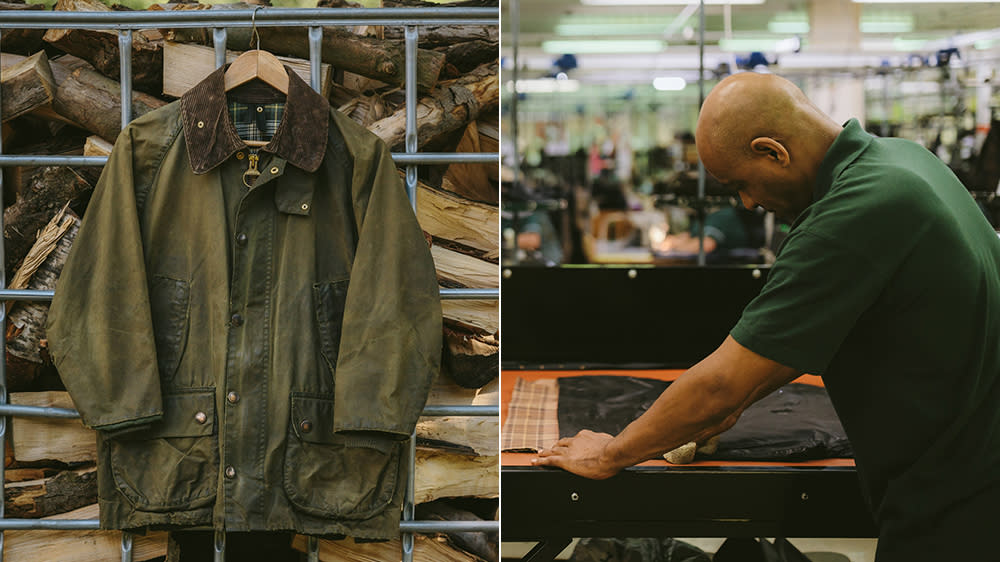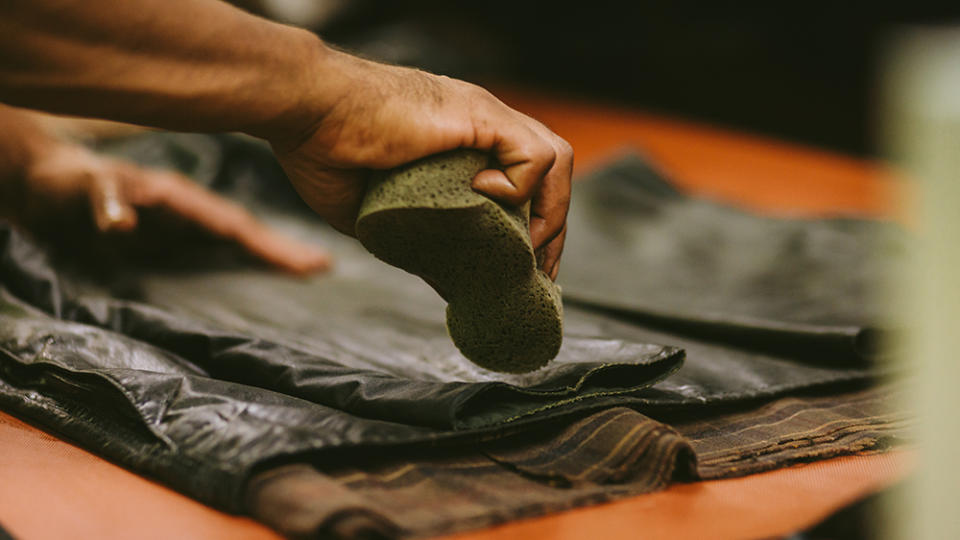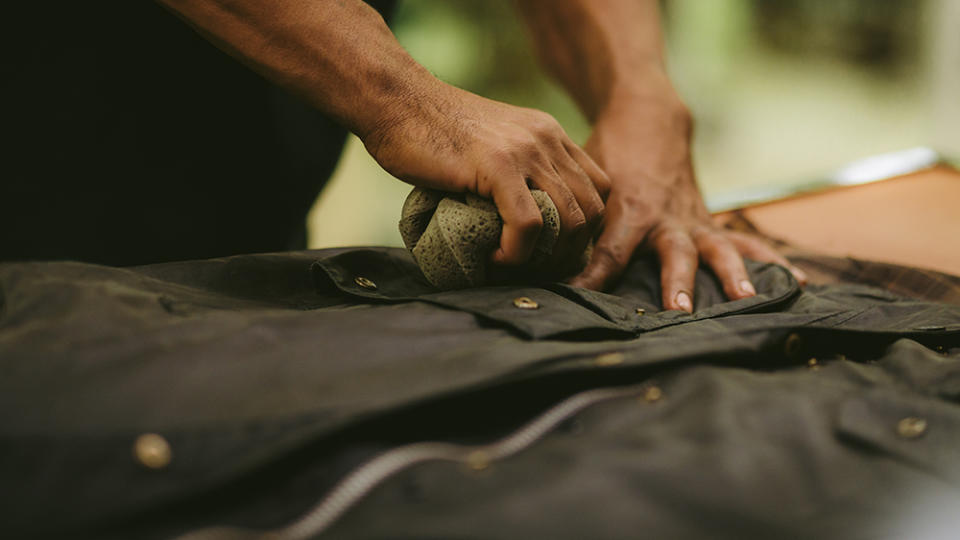Waxed Jacket Season Is Upon Us. Here’s How to Make Sure Yours Is in Top Condition.

Long before the phrase “Gore-Tex” was trademarked, waxed jackets were keeping men dry on land and sea. Although waterproof synthetics are widely available today, the waxed jacket’s natural properties and rustic appeal have earned it an enthusiastic modern following: heritage maker Barbour has collaborated with the likes of Noah and Moncler while labels including Drake’s, Todd Snyder, and Billy Reid have introduced their own iterations.
However, the wax coating that gives these cotton jackets their water-repellency is not permanent and fades with use. As a result, waxed jackets require periodic re-waxing to remain functional.
More from Robb Report
How Menswear Maestro Umit Benan Became One of Milan's Most Exciting Designers
H. Moser & Cie Just Dropped Two Smaller Pioneer Watches With Arctic Blue Dials
“Over time, the wax becomes worn in areas of constant abrasion such as shoulders, pocket edges, cuffs, and elbows,” says Paul Wilkinson, who serves as Barbour’s global marketing and commercial director and managing director in the U.S. Wilkinson suggests an annual re-wax and says that a jacket’s texture going from waxy to “dry” is a sure sign of needed maintenance, as is a lack of weather resistance. A jacket’s appearance will also change with wax loss, leading to lighter-colored creases and patches—a development that’s often prized by wearers.
“Some of our customers prefer the aesthetic of the jacket as the wax dries out, as it develops its own character and patina,” Wilkinson tells Robb Report. “The jacket will still be very wearable, but it will not be as weather resistant as it was when they originally bought it.”

Once a jacket is re-waxed it will have a darker, uniform coloration, essentially returning the garment to factory settings. And while some wearers may feel frustrated at having to restart the patination process, re-waxing extends the garment’s lifetime, as dry waxed cotton is more likely to suffer abrasions and tears.
Barbour jackets may be sent directly back to the manufacturer, which maintains a year-round repair and re-wax program that will service and return the garment in a matter of weeks. Alternatively, the company also sells its own thornproof dressing to those inclined to re-wax at home.
DIY re-waxing is an involved process that first requires that the jacket be cleaned with a sponge and cold water (Wilkinson stresses that a waxed jacket should never see the inside of a washing machine). Afterward, the wax—which must be melted into liquid ahead of time—will be applied to the jacket’s entire exterior with an old cloth or sponge, while taking care to avoid the corduroy collar, inside lining and the insides of the pockets. Finally, the re-waxed jacket must be hung up to dry overnight, away from other garments.
Wilkinson says that Barbour’s professional re-waxing service and at-home remedy are popular, to the tune of 60,000 jackets re-waxed and 100,000 wax tins sold annually. Barbour, however, does not service waxed jackets manufactured for other brands.
Those with waxed jackets produced by other parties can still take the at-home route. Otterwax, based in Portland, Oregon, offers a range of naturally made waxing products including a heat-activated fabric dressing and a less labor-intensive fabric wax bar that can be used to touch up waxed garments.

But not everyone is cut out for—or willing—to put in the work at home. “A lot of people try to do it, but then send it to me because they can’t finish it,” says Alain Gauthier, whose company New England Reproofers is the sole independent re-waxing business operating in the United States today.
Gauthier takes all comers, and garments, having re-waxed everything from mittens to chaps. The New Hampshire-based business, which consists of Gauthier and two part-time employees, has worked with clients as far afield as Japan and New Zealand.
Barbour jackets still make up a substantial part of the business—Gauthier estimates about 30 percent—but the bulk comes from Filson, which produces a wide range of waxed garments but does not provide an in-house re-waxing service itself. Instead, the company directly refers customers to New England Reproofers.
The typical turnaround for a garment to be re-waxed by New England Reproofers is two to three weeks: however, much-needed jackets can be turned around in three days via a “rush” service with a $15 upcharge.
The need for annual maintenance, like changing a car’s oil, makes a waxed cotton jacket a somewhat involved piece of outerwear to own. But that same property that might have you melting wax or heading to UPS once per year is precisely what gives waxed jackets their charm—which, properly maintained, can last a lifetime.
Best of Robb Report
Sign up for Robb Report's Newsletter. For the latest news, follow us on Facebook, Twitter, and Instagram.

